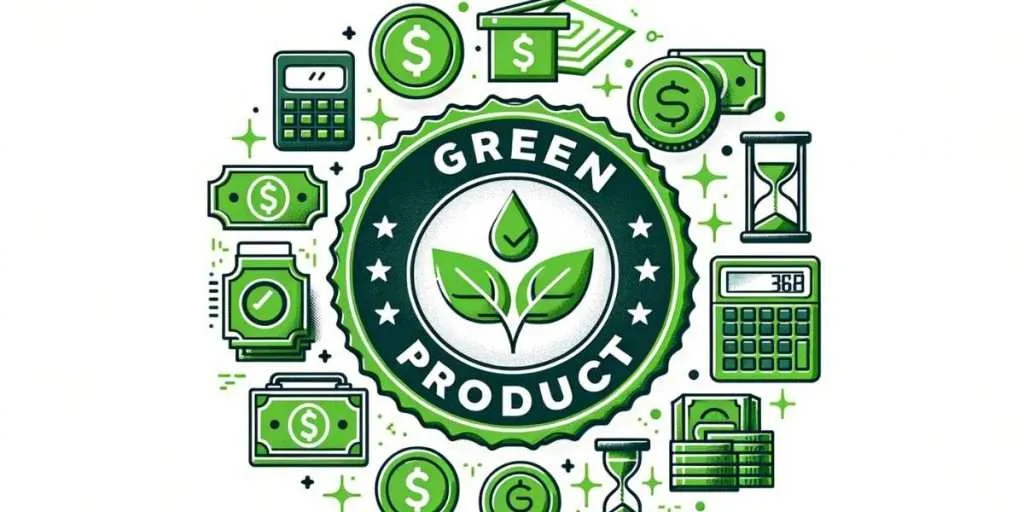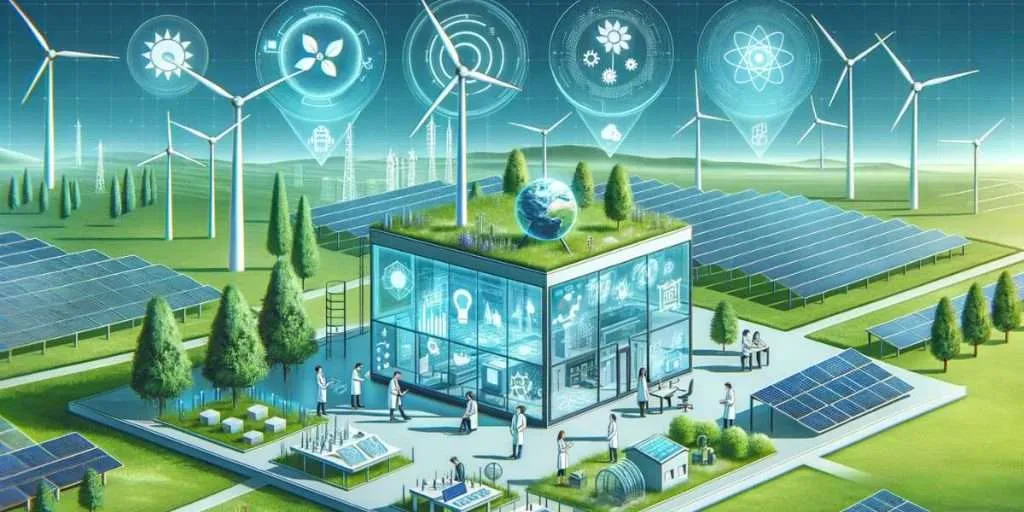Are eco-friendly products more expensive? It’s a pressing query that intertwines our purchasing decisions with environmental consciousness.
Navigating the green marketplace, many consumers grapple with the perceived cost implications of choosing sustainable products.
If you’ve been balancing your budgetary constraints with a desire to shop ethically, you’re in a vast company of eco-aware shoppers.
Armed with insights from market research and sustainable product studies, I’ve tackled this very question head-on.
Join me in this exploration, and together, let’s dissect the price dynamics of eco-friendly products, understanding their value proposition in both monetary and environmental terms
Key Takeaways on Are Environmentally Friendly Products More Expensive
- Eco-friendly products often use sustainable materials.
- Eco-friendly products reduce long-term environmental costs.
- Eco-friendly products may have higher production standards.
- Eco-friendly products can lead to savings over time.
- Eco-friendly products often have a niche market.
- Eco-friendly products can be cost-competitive as demand grows.
- Eco-friendly products sometimes carry certification labels.
Eco Friendly Products
As an increasing number of people become aware that their actions are contributing to the destruction of our planet, we see a higher percentage turning towards eco-friendly and sustainable products.
Although these sustainable products can be more expensive than traditionally made items, it is well worth investing in them because they have fewer negative impacts on the environment while also lasting longer due to being better quality materials.
- Raw Material Costs: Eco-friendly products often use natural, organic, or sustainably sourced materials, which can be costlier to produce or harvest than synthetic alternatives.
- Production Methods: Sustainable and environmentally-friendly manufacturing processes might be less efficient or more labor-intensive, leading to higher costs.
- Certification Costs: Obtaining certifications (e.g., organic, fair trade) can be an expensive process for companies.
- Research and Development: Companies may invest heavily in R&D to create eco-friendly alternatives to conventional products.
- Packaging: Eco-friendly packaging materials, which are biodegradable or recyclable, can be more expensive than traditional plastic packaging.
- Economies of Scale: Many eco-friendly products are produced by smaller companies or in smaller batches, which can result in higher per-unit costs.
- Ethical Labor Practices: Companies committed to sustainability often ensure fair wages and better working conditions, which can increase production costs.
- Supply Chain: Sustainable supply chains, emphasizing ethical sourcing and reduced carbon footprints, can be more expensive to maintain.
- Consumer Demand: The growing demand for green products allows companies to set higher prices, knowing that consumers are willing to pay more for sustainable options.
- Long-term Investment: While the initial cost might be higher, eco-friendly products often last longer, leading to potential savings over time.
- Marketing and Branding: Companies might invest in marketing to educate consumers about the benefits of their eco-friendly products, adding to the overall cost.
Low Demand (for now)
The sustainability movement has been on the rise for a while now and it looks like we’re going to have some good times ahead. Imagine how much better this world could be if everyone had an eco-conscious mindset?
Alas, there’s still plenty of work left to do before that becomes reality but rest assured: the future is looking brighter than ever with companies finally feeling comfortable enough in their own practices (the law of supply) as well as people demanding them more and more every day thanks to our relentless pursuit for peace, love, truth -and all things green!
While natural living may not yet seem popular or profitable at the present time because demand for sustainable and eco-friendly products hasn’t increased significantly just yet; however when such demand does increase among consumers then prices will fall accordingly.
Though we may still have a long way to go, there are signs that demand forsustainable and eco-friendly products will increase. It has been discovered that an increasing number of people are willing to pay higher prices for these green and eco-friendly goods.

Sustainable Products Raw Material Costs
The bedrock of any eco-friendly product lies in its ingredients or materials. Today, there’s an increasing shift towards using natural, organic, or sustainably sourced materials in the production of green products. This shift is driven by a conscious effort to reduce the environmental impact and offer consumers healthier alternatives.
However, this conscious choice comes with its set of challenges, especially in terms of costs. Natural and organic materials often require more meticulous care during cultivation or harvesting. For instance, organic cotton is grown without pesticides, which means farmers might face lower yields compared to conventional cotton farming. Similarly, sustainably sourced wood might come from managed forests where trees are replanted to ensure a balance in the ecosystem. These practices, while environmentally commendable, demand more time, care, and often, more land.
On the other hand, synthetic materials, produced in large-scale industrial settings, benefit from economies of scale. Their production is streamlined, faster, and often involves chemicals or processes that speed up output but can be detrimental to the environment. Thus, when compared, the cost of producing or harvesting natural materials is frequently higher than their synthetic counterparts, contributing to the higher price tags of eco-friendly products.
Eco Friendly Products Production Methods
Manufacturing in an eco-friendly manner is not just about the materials used, but also about how they are transformed into the final product. Sustainable production methods often prioritize the environment and workers’ welfare over speed or cost-efficiency.
For instance, consider a garment dyed using natural dyes versus chemical ones. Natural dyes might require longer processing times, more water, or even specific temperature conditions to ensure the color sets properly. Similarly, handmade or artisanal products, celebrated for their unique touch, can’t match the speed of machine-made counterparts.
Another aspect is waste management. Eco-friendly production methods often incorporate strategies to minimize waste, recycle water, or reduce energy consumption. While these are crucial steps towards a sustainable future, they can introduce inefficiencies or require investments in specialized equipment or technology. This meticulous and sometimes slower approach to production can lead to higher costs, which are then reflected in the product’s final price.

Green Products Certification Costs
In a market where “greenwashing” (misleading consumers about the environmental benefits of a product) is a genuine concern, certifications play a pivotal role. They serve as a stamp of approval, assuring consumers that a product genuinely meets specific environmental or ethical standards.
Whether it’s the USDA Organic label, Fair Trade certification, or any other eco-label, obtaining these certifications is not a simple task. Brands must undergo rigorous testing, regular audits, and often have to modify their production processes to meet the set criteria.
These certifications aren’t a one-time affair. To maintain their certified status, companies must undergo periodic reviews, ensuring they consistently adhere to the guidelines. This continuous process of evaluation and adherence means companies incur regular costs.
There’s also a cost associated with the actual certification process. Whether it’s fees paid to the certifying body, costs related to modifying production processes, or even the expense of changing packaging to display certifications, these all add up.

Eco Friendly Research and Development
In the realm of sustainability, innovation is paramount. As the world grapples with environmental challenges, there’s an urgent need for products that not only meet consumer demands but also align with eco-friendly standards. This is where the intricate dance of research and development (R&D) comes into play.
The journey behind each green product often starts in a lab or a brainstorming room, where scientists, engineers, and innovators come together to ideate, experiment, and test. The goal? To find alternatives that are both sustainable and efficient. For instance, developing a biodegradable alternative to single-use plastics or creating energy-efficient appliances that don’t compromise on performance.
However, pioneering such sustainable alternatives doesn’t come cheap. The process involves trial and error, patenting new technologies, and sometimes, years of research. It’s a hefty financial investment, with no guaranteed success. But for many eco-conscious companies, it’s a necessary expenditure, as they recognize the long-term benefits these innovations can bring both to the environment and to their brand reputation.
Eco-Friendly Packaging
In our modern consumer-driven world, the product is just half the story. How it reaches the consumer — its packaging — plays an equally crucial role. As awareness about the detrimental effects of plastic pollution grows, there’s a concerted push towards eco-friendly packaging.
The transition from plastic to biodegradable or recyclable packaging is more than just a switch in materials. It’s a holistic approach that considers the entire lifecycle of the packaging. From sourcing raw materials (like bamboo or cornstarch) to the production process, and finally, to how it decomposes or is recycled — every step is reimagined with sustainability in mind.
However, these sustainable packaging solutions often come with a higher price tag. Biodegradable materials might be more expensive to source or produce. Recyclable packaging, on the other hand, requires infrastructure for collection, sorting, and processing. Ensuring the packaging maintains the product’s integrity (like preventing spoilage in food items) while being eco-friendly can introduce additional challenges and costs.

Sustainable Products Economies of Scale
Scale plays a significant role in determining the cost of a product. Traditional products, manufactured in massive quantities, benefit from economies of scale. This means that as production increases, the cost per unit of the product decreases, owing to fixed costs being spread out over more units.
Eco-friendly products, however, often don’t enjoy this luxury. Many sustainable brands operate on a smaller scale, either due to niche market demand, limited availability of sustainable materials, or the artisanal nature of their products. Producing in smaller batches can mean missing out on bulk discounts for raw materials or facing higher per-unit production costs.
Limited production runs can lead to less predictability in supply chains, making it harder to optimize costs. For instance, a brand producing handcrafted, eco-friendly furniture might not be able to predict demand as accurately as a large-scale furniture manufacturer, leading to potential inefficiencies in production and higher costs.
Eco Friendly Products Ethical Labor Practices
In the journey towards sustainability, the well-being of the planet goes hand in hand with the well-being of its people. Herein lies the significance of ethical labor practices, a cornerstone for many sustainable brands.
For eco-conscious businesses, it’s not just about producing green products but ensuring they’re created under fair and humane conditions. This translates to providing fair wages that reflect the true value of a worker’s labor, ensuring safe working environments, and prohibiting unethical practices such as child labor or forced labor.
However, committing to ethical labor practices can have financial implications. Fair wages might mean higher payroll expenses. Investing in better working conditions, such as safer equipment or more comfortable workspaces, can also increase operational costs. But many brands view this not as an unnecessary expenditure but as a long-term investment in their workforce and, by extension, in the quality and integrity of their products.

Sustainable Supply Chain
Behind every eco-friendly product is a supply chain striving to uphold the same green standards. But maintaining a sustainable supply chain is no easy feat.
From sourcing raw materials ethically to ensuring that manufacturing processes are green, every step is under scrutiny. Take, for instance, a brand committed to using organic cotton. This means ensuring that the cotton is grown without harmful pesticides, but it also means verifying that it’s harvested and processed without exploiting labor.
Then comes the challenge of transportation. Eco-conscious brands often aim for carbon-neutral shipping, offsetting their carbon emissions through various means. This, coupled with ethical sourcing, can introduce additional costs. For instance, sourcing sustainable materials might mean importing from distant locations, leading to higher transportation costs. Carbon offsetting, while crucial for the environment, is another expenditure.
Sustainable Products Consumer Demand and Pricing
The market’s heartbeat is its consumers, and their preferences and demands shape the landscape. Over the years, there’s been a discernible shift in consumer behavior, with many willing to pay a premium for green products. They’re not just buying a product; they’re investing in a cause, be it environmental conservation or social justice.
This heightened demand for sustainable products allows eco-friendly brands to set slightly higher prices. It’s not just about covering the additional costs of sustainable production, but also about the added value these products bring in terms of environmental benefits and ethical standards. However, brands also walk a tightrope, ensuring that their products, while priced higher, remain accessible to a broad consumer base.
Reusable Products Long-term Investment Perspective
While the initial costs associated with sustainable practices might seem daunting, it’s crucial to view them through the lens of long-term investment. Eco-friendly products often boast durability and longevity, meaning consumers spend less in the long run. For brands, investing in ethical practices and sustainable methods can lead to brand loyalty, positive word-of-mouth, and a reputation that can set them apart in a competitive market.
Moreover, as regulations tighten and the world becomes more eco-conscious, brands that have already embraced sustainability will be ahead of the curve. They’ll face fewer disruptions and will be better positioned to cater to an increasingly green-conscious consumer base.
Sustainability, while challenging and often costlier in the short term, is a vision for the future. It’s an investment in a world where businesses thrive without compromising the health of the planet or its inhabitants.
Reusable Products Usually Costs More But Saves You Money Later On
Reusable products might initially seem more expensive, but in the long run, they are much less costly than disposable products.Reusable products, such as reusable straws and stainless steel water bottles, can
significantly reduce your plastic waste. However, the initial investment in these products is frequently prohibitively expensive.
Most people are put off by the high prices of these reusables. What they don’t realise is that they will save money in the long run. This is because their cost can be spread over many uses rather than being paid for each time you use them like with a one-time product such as paper napkins or plastic water cups.
Purchasing any reusable item is truly a case of “buy once, use many times” if you invest in high-quality products. These products are typically more expensive, but they end up costing less in the long run.
A reputable brand’s stainless steel water bottle, for example, may cost more than single-use water bottles. However, because these products are durable, they will undoubtedly last a long time. Keep in mind that higher-quality goods always cost more.

Should You Still Buy Eco-Friendly Products?
We all have the responsibility to take care of our planet, not just for our children but also for ourselves! Eco-friendly and sustainable products are an investment in your future. They help reduce both environmental pollution and climate change so you can enjoy a healthier planet that is more prosperous as well.
You should still consider switching to eco-friendly items because they’re totally worth it from an economical standpoint while reducing your carbon footprint at the same time. And who wouldn’t want those benefits?
From now on, be mindful about which product choices we make by considering how much fossil fuel was used or if toxic chemicals were involved with making them.
However, keep in mind to buy sustainable items only when you have the financial resources available; otherwise buying them out of guilt will never work in favour of sustainability efforts.
FAQS on are environmentally friendly products more expensive?
Why are eco-friendly products more expensive than regular ones?
Eco-friendly products are more expensive than regular ones due to the higher manufacturing costs associated with sustainable materials and production methods.
Are there any long-term cost savings with eco-friendly products?
Yes, there can be long-term cost savings with eco-friendly products, as they often result in reduced energy consumption and fewer replacements over time.
Can consumers save money by making eco-friendly choices in the long run?
Consumers can potentially save money by making eco-friendly choices in the long run, thanks to the durability and energy efficiency of many eco-friendly products.
What factors contribute to the higher manufacturing costs of eco-friendly products?
Several factors contribute to the higher manufacturing costs of eco-friendly products, including the need for sustainable sourcing, cleaner production processes, and adherence to ethical labor practices.
Do eco-friendly products tend to become more affordable as technology advance?
Whether eco-friendly products become more affordable as technology advances depends on various factors, but advancements in technology and increased demand can lead to cost reductions over time.





